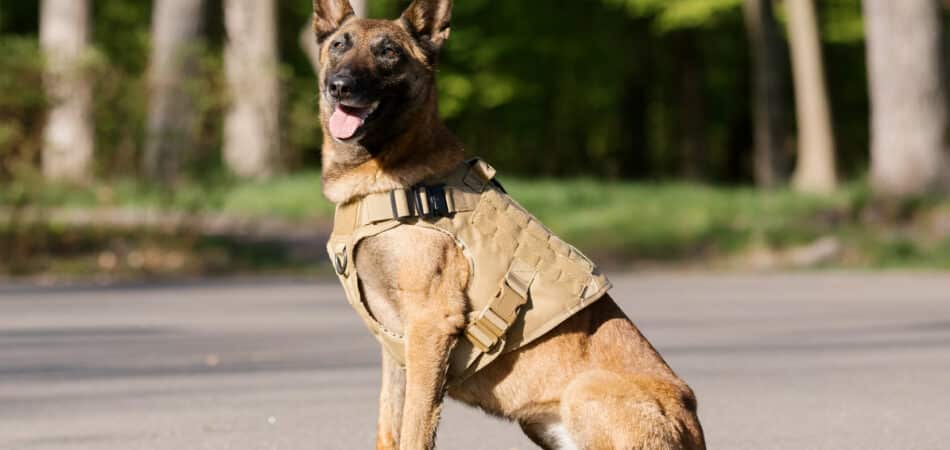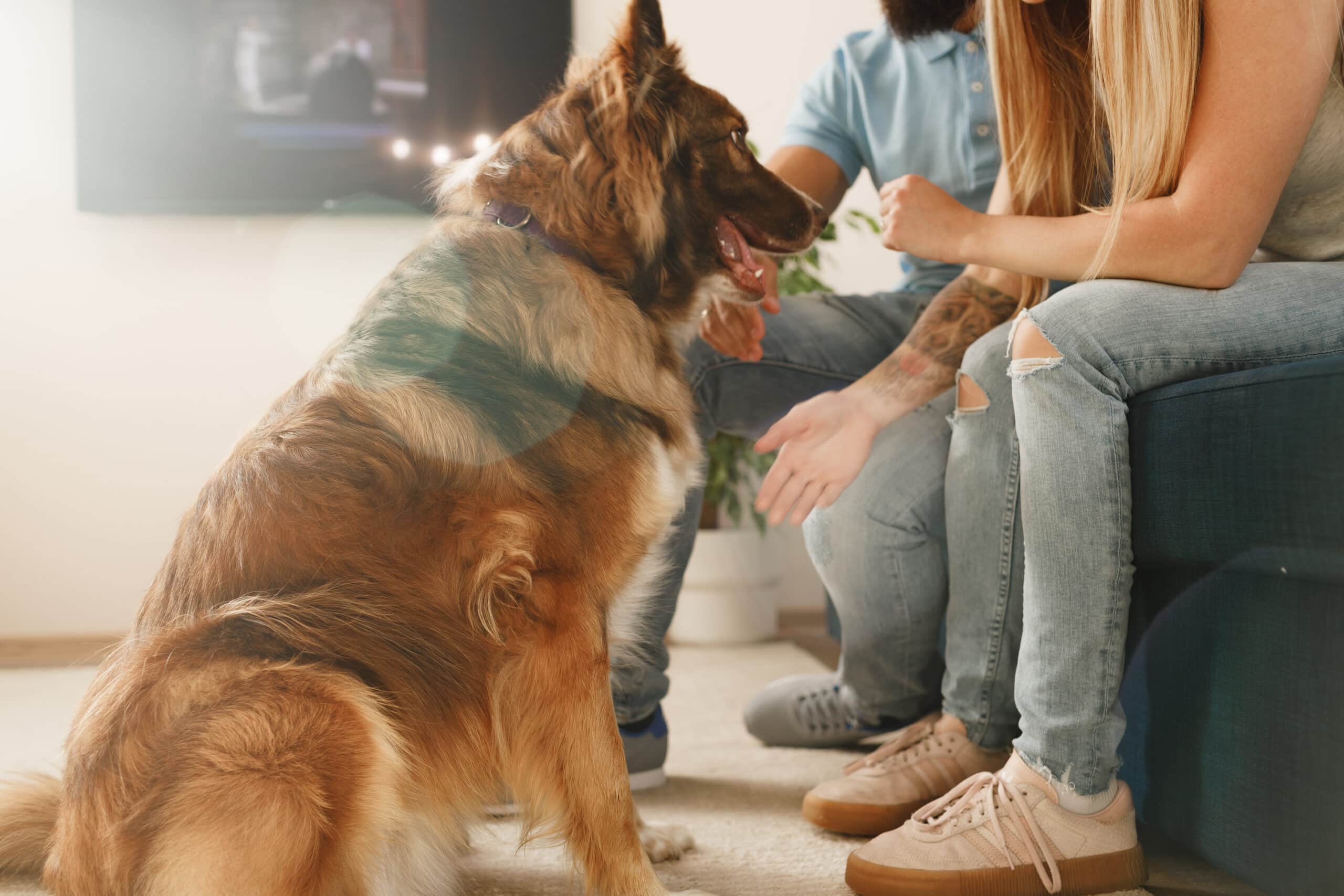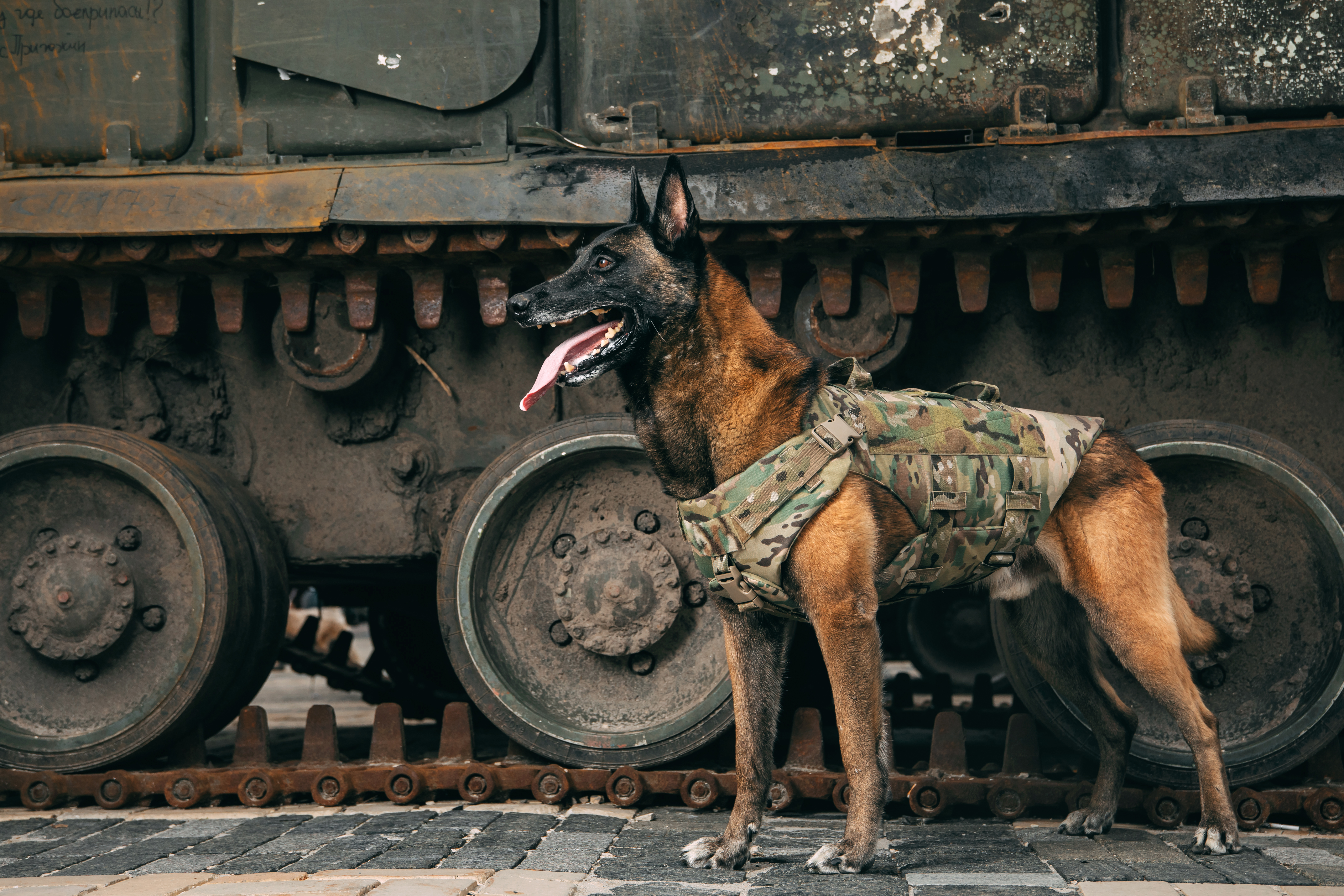






A decade or so ago, you’d see handlers with basic protection dog gear. Now? It’s a whole different ballgame. Walk into any high-end K9 shop and you’ll be bombarded with gadgets. Head halters, front-clip harnesses, and a variety of “no-pull” gadgets have muscled their way onto pet store shelves.
However, as we look into this technological revolution, a crucial question emerges: Are we prioritizing gadgets over the fundamental bond that lies at the heart of any successful protection team?
Take the head halters, for instance. Borrowed from the horse world, they operate on the principle that if you’ve got the head, you’ve got the whole dog. It’s a shortcut, plain and simple.
No need for intense training or building a bond—just slap on the halter and voila! Instant obedience, or so the manufacturers would have you believe. But at what cost?
This article explores the evolution of protection dog gear, examining the shift from traditional tools to modern-day tech. We will dig into the benefits and potential drawbacks of these advancements, ultimately considering whether they truly enhance the capabilities of protection dogs or risk overshadowing the invaluable human-canine connection.
 Protection dogs have been used for centuries, with early handlers relying on simple gear like leather collars and leashes. These basic tools served two primary purposes: controlling the dog and signaling commands.
Protection dogs have been used for centuries, with early handlers relying on simple gear like leather collars and leashes. These basic tools served two primary purposes: controlling the dog and signaling commands.
In these early stages, the focus wasn’t on specialized gear but rather on the dog’s training and obedience. Equipment was secondary, playing a minimal role in protection. However, as the relationship between dog and handler deepened, so too did the demand for more specialized equipment.
As protection dogs began to serve in more specialized roles—such as military, police, and private security—the need for more functional gear grew, each serving a unique, specific purpose.
Take muzzles, for instance. They’ve become a staple in protection dog training, ostensibly for safety. The idea is to prevent accidental bites during high-intensity drills or to protect the dog from ingesting harmful substances in the field.
Now, let’s talk about harnesses. The shift from collars to harnesses was driven by the need for better control and force distribution. On paper, it makes sense. Harnesses spread the pressure across the dog’s chest and shoulders, reducing the risk of neck injuries. They give handlers more control, especially when dealing with large, powerful breeds.
And we come to tactical vests. These are becoming more and more common in K9 units used by the military and police enforcement, as well as in private security.
The selling points are clear: protection against physical threats, from sharp objects to ballistics, and a platform for attaching additional gear like cameras or GPS units.
With the onset of the digital era, protection dog gear entered a new phase. Today, high-tech equipment is as much a part of the gear as the dogs themselves. One of the most prominent advancements is the use of GPS trackers and body cameras.
GPS trackers allow handlers to monitor their dogs’ locations in real time. This is especially important in search-and-rescue missions or when dogs are used in large areas like open fields.
The GPS technology ensures that handlers can quickly locate their dogs, even in the most remote or challenging environments.
Body cameras provide a first-person view of what the dog is encountering. This technology is commonly used in military and police operations, where real-time video footage can offer crucial information during a mission.
With the addition of night vision and thermal imaging capabilities, these cameras have revolutionized how handlers see and understand their dogs’ environments.

AI could assist with threat detection, navigation, and even decision-making during complex missions, enhancing the overall efficiency and safety of the operation.
Let’s cut through the marketing hype and talk about the real impact of all this fancy new gear. Sure, there are benefits—I’m not blind to that. But we need to take a hard look at what we’re gaining and what we’re losing in this rush to tech up our dogs.
First off, let’s address ballistic vests. Are they useful in high-risk scenarios? Absolutely. Can they save a dog’s life? No doubt.
But here’s what the gear catalogs won’t tell you: they’re also restrictive, heavy, and can lead to overheating.
I’ve seen dogs in full kit struggle to maintain the agility and speed that make them such valuable assets in the first place. And this is not something I’d recommend for a family protection dog. You’d essentially be trading mobility for protection, and that’s a trade-off you need to be damn sure about before you make it.
Now, if you need a special harness to control your dog, you’ve got bigger problems.
A well-trained protection dog should respond to your commands, harness or no harness. These tools should be a backup, not your primary means of control.
Don’t get me wrong—I’m not some Luddite railing against all technology. These tools have their place.
Whether your dog is patrolling your property or simply accompanying you on a family hike, there are some essential items every family protection dog should have.
Beyond food, water, a collar, and a sturdy leash, these tools ensure your dog remains safe, comfortable, and prepared for any situation that may arise.
Accidents happen, even to well-trained dogs. That’s why a Pet First Aid Kit is a must-have. You never know when your dog might step on a thorn, encounter an insect sting, or get a small cut while on the move. So if you’re going out for a short walk or run, you can just bring the essentials.
However, we suggest adding a few more items to the kit for maximum preparedness:
🐾Styptic powder: This is critical for controlling minor bleeding, whether it’s from a torn nail or a small wound. It’s quick, effective, and easy to apply.
🐾Vet wrap: While the kit includes some gauze, adding an extra roll of vet wrap is highly recommended. Unlike standard tape, vet wrap is flexible, strong, and easy to use, making it perfect for securing gauze or covering wounds.
🐾Muzzle: If your dog is injured or in distress, even the most docile pets might bite. A soft muzzle can prevent accidental bites while you administer first aid, ensuring safety for both you and your dog.
A GPS tracker ensures that you always know where your dog is. This is particularly useful in the event that your dog gets spooked, wanders off, or is engaged in a search-and-rescue operation.
GPS collars or clip-on trackers provide real-time location updates via smartphone apps, giving you a direct line to your dog’s whereabouts.
Your four-legged protector needs to be equipped for all types of weather. Dog jackets are essential for protecting against the cold, especially for short-haired breeds.
Jackets that are waterproof and insulated provide a good balance between protection from rain and warmth during chilly months. Many dog jackets also have reflective strips, which are crucial for visibility during night walks or in low-light conditions.
For those hot summer months, especially if you live in warmer climates, a cooling vest is a lifesaver for your protection dog. These vests are designed to keep your dog cool by reflecting the sun’s rays and maintaining hydration.
This is especially important during outdoor training sessions or extended periods of physical activity in the heat.
In harsher climates or more rugged terrain, dog boots are another must-have. These are not just for show—boots can protect your dog’s paws from hot asphalt, freezing snow, sharp rocks, and even chemical de-icers that can irritate or burn their pads. Make sure to choose boots with adjustable straps and non-slip soles to ensure a secure and comfortable fit.
Here’s the bottom line: gear should support your training and your dog’s natural abilities, not replace them.
The best “gear” you can have is knowledge—understanding canine behavior, knowing proper training techniques, and being able to read your dog’s body language.